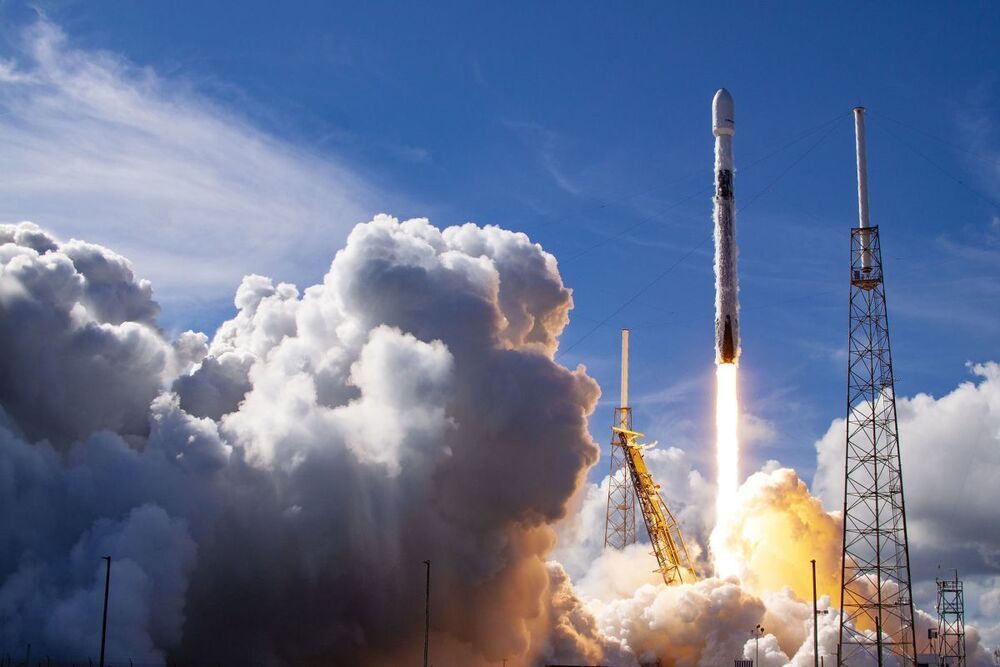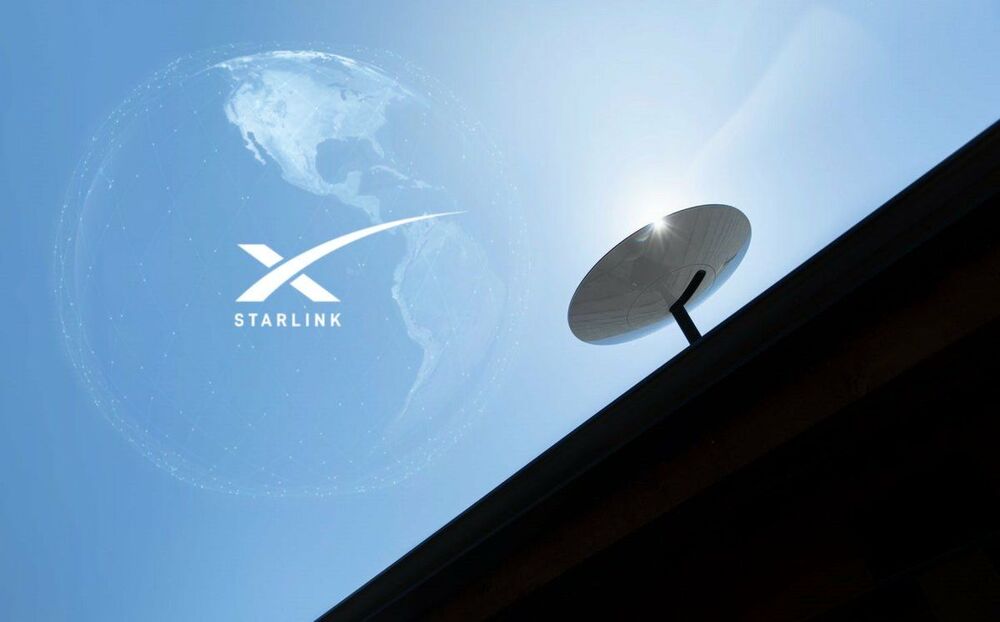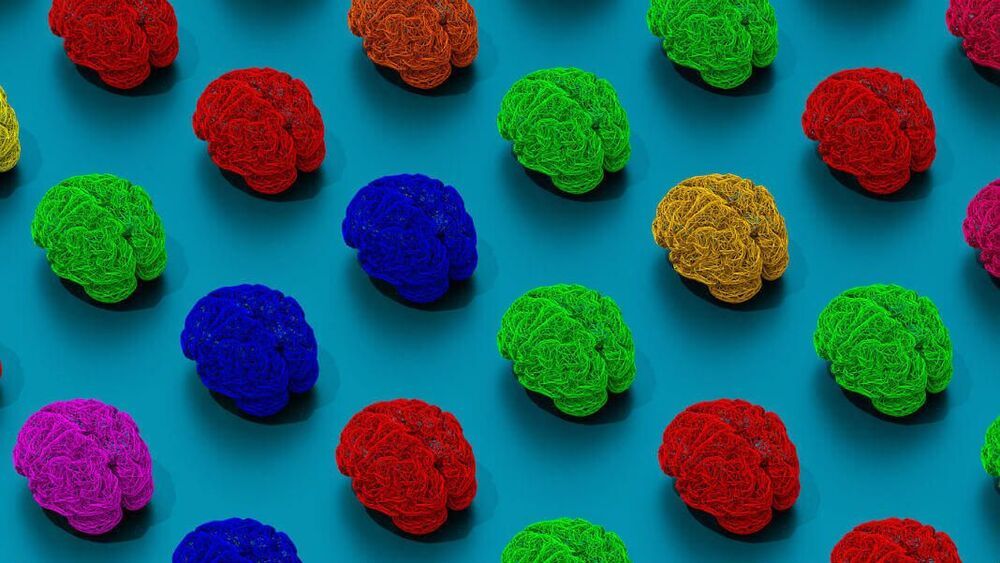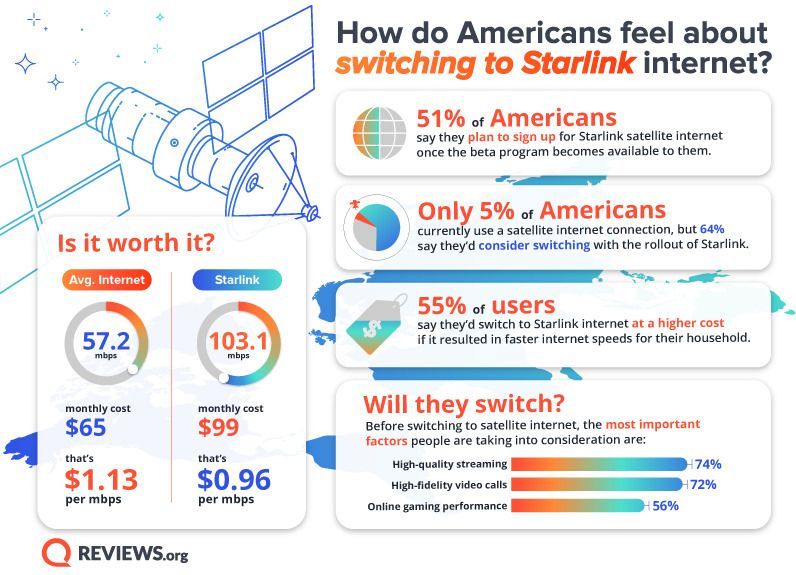SpaceX will launch its first batch of Starlink satellites in 2021 on Tuesday (Jan. 19) to expand the company’s growing megaconstellation and you can watch the action live online.




SpaceX aims to provide Starlink satellite broadband internet service worldwide. “With performance that far surpasses that of traditional satellite internet, and a global network unbounded by ground infrastructure limitations, Starlink will deliver high speed broadband internet to locations where access has been unreliable, expensive, or completely unavailable,” the company’s website states, “Starlink is now delivering initial beta service both domestically and internationally, and will continue expansion to near global coverage of the populated world in 2021.” SpaceX is currently providing Starlink beta service to select customers living in northern United States, Canada, and United Kingdom. To receive updates about when service will be available in your area sign-up via Starlink.com.
Starlink customers receive broadband internet connection from the satellites in space via a Starlink Kit which includes a phased-array antenna dish, Wi-Fi router, along with power and mounting equipment. The kit is priced at $499 USD, with a monthly service fee of $99 USD. SpaceX has approval from the Federal Communications Commission (FCC) to operate 1 Million dish antennas for customers in the United States. In July, the company submitted a new FCC request to operate 5 Million additional dish terminals in the U.S. – “SpaceX Services requests this increase in authorized units due to the extraordinary demand for access to the Starlink non-geostationary orbit satellite system,” the company wrote in the FCC filing last year. The FCC has not approved the request yet.
Reviews.org, a team that reviews technology products online, conducted a asking 500 Americans if they would switch internet provider once SpaceX’s Starlink broadband service enters the public telecommunications market. “Starlink internet is perfect for those who feel stuck with slow speeds from their internet provider –especially in rural areas where building out cable and fiber networks either takes a long time or is less likely to provide adequate coverage,” Reviews.org wrote in its website. According to the Review.org results, 51% of Americans would switch to SpaceX Starlink Internet service. “51% of internet users say they plan to sign up for the Starlink beta once it becomes available to them. While only 5% of Americans currently use a satellite internet connection, 64% of respondents say Starlink’s rollout would make them reconsider their satellite internet stance,” Review.org representatives wrote in the publication, “55% of non-satellite internet users say they’d switch to Starlink’s satellite internet service at a higher cost if it resulted in faster internet speeds for their household,” they stated. The organization compiled a graphic with more details about the their, pictured below.

The result was a bizarre, Lego-like human tissue that replicates the basic circuits behind how we decide to move. Without external prompting, when churned together like ice cream, the three ingredients physically linked up into a fully functional circuit. The 3D mini-brain, through the information highway formed by the artificial spinal cord, was able to make the lab-grown muscle twitch on demand.
In other words, if you think isolated mini-brains—known formally as brain organoids—floating in a jar is creepy, upgrade your nightmares. The next big thing in probing the brain is assembloids—free-floating brain circuits—that now combine brain tissue with an external output.
The end goal isn’t to freak people out. Rather, it’s to recapitulate our nervous system, from input to output, inside the controlled environment of a Petri dish. An autonomous, living brain-spinal cord-muscle entity is an invaluable model for figuring out how our own brains direct the intricate muscle movements that allow us stay upright, walk, or type on a keyboard.

The Chinese capital may be the most well-positioned to help China’s satellite internet ambitions. Ultimate Blue Nebula’s Lan said private satellite manufacturers and space transport providers based in Beijing could make up as much as 80 per cent of the nascent Chinese satellite internet industry’s overall supply chain.
The Chinese capital is already home to a comprehensive supply chain for satellite manufacturers and space transport providers.

We are fascinated by machines that can control cars, compose symphonies, or defeat people at chess, Go, or Jeopardy! While more progress is being made all the time in artificial intelligence (AI), some scientists and philosophers warn of the dangers of an uncontrollable superintelligent AI. Using theoretical calculations, an international team of researchers, including scientists from the Center for Humans and Machines at the Max Planck Institute for Human Development, shows that it would not be possible to control a superintelligent AI. Their study is published in the Journal of Artificial Intelligence Research.
Suppose in the not-too-distant future that a research team builds an AI system with intelligence superior to that of humans, so it can learn independently. Connected to the Internet, the AI would have access to all of humanity’s data. It could replace existing programs and take control of all machines globally.
Would this produce a utopia or a dystopia? Would the AI cure cancer, bring about world peace, and prevent a climate disaster? Or would it destroy humanity and take over the Earth?

London, 15 January, 2021 — OneWeb, the Low Earth Orbit (LEO) satellite communications company jointly owned by the UK Government and Bharti Global, announced today that it has secured additional funding from SoftBank Group Corp. (“SoftBank”) and Hughes Network Systems LLC (“Hughes”), bringing OneWeb’s total funding to $1.4 billion. The capital raised to date positions the Company to be fully funded for its first-generation satellite fleet, totaling 648 satellites, by the end of 2022.
OneWeb’s mission is to deliver broadband connectivity worldwide to bridge the global Digital Divide by offering everyone, everywhere access including to the Internet of Things (IoT) future and a pathway to 5G. OneWeb’s LEO satellite system includes a network of global gateway stations and a range of user terminals for different customer markets capable of delivering affordable, fast, high-bandwidth and low-latency communications services. In December 2020, OneWeb launched 36 new satellites, built at its Airbus Joint Venture assembly plant in Florida, USA, bringing the Company’s total fleet to 110 satellites, all fully-functioning and benefitting from International Telecommunication Union spectrum priority.
Sunil Bharti Mittal, Executive Chairman of OneWeb, commented, “We are delighted to welcome the investment from SoftBank and Hughes. Both are deeply familiar with our business, share our vision for the future, and their commitment allows us to capitalise on the significant growth opportunity ahead for OneWeb. We gain from their experience and capabilities, as we deliver a unique LEO network for the world.”


The process of systems integration (SI) functionally links together infrastructure, computing systems, and applications. SI can allow for economies of scale, streamlined manufacturing, and better efficiency and innovation through combined research and development.
New to the systems integration toolbox are the emergence of transformative technologies and, especially, the growing capability to integrate functions due to exponential advances in computing, data analytics, and material science. These new capabilities are already having a significant impact on creating our future destinies.
The systems integration process has served us well and will continue to do so. But it needs augmenting. We are on the cusp of scientific discovery that often combines the physical with the digital—the Techno-Fusion or merging of technologies. Like Techno-Fusion in music, Techno-Fusion in technologies is really a trend that experiments and transcends traditional ways of integration. Among many, there are five grouping areas that I consider good examples to highlight the changing paradigm. They are: Smart Cities and the Internet of Things (IoT); Artificial Intelligence (AI), Machine Learning (ML), Quantum and Super Computing, and Robotics; Augmented Reality (AR) and Virtual Reality Technologies (VR); Health, Medicine, and Life Sciences Technologies; and Advanced Imaging Science.
